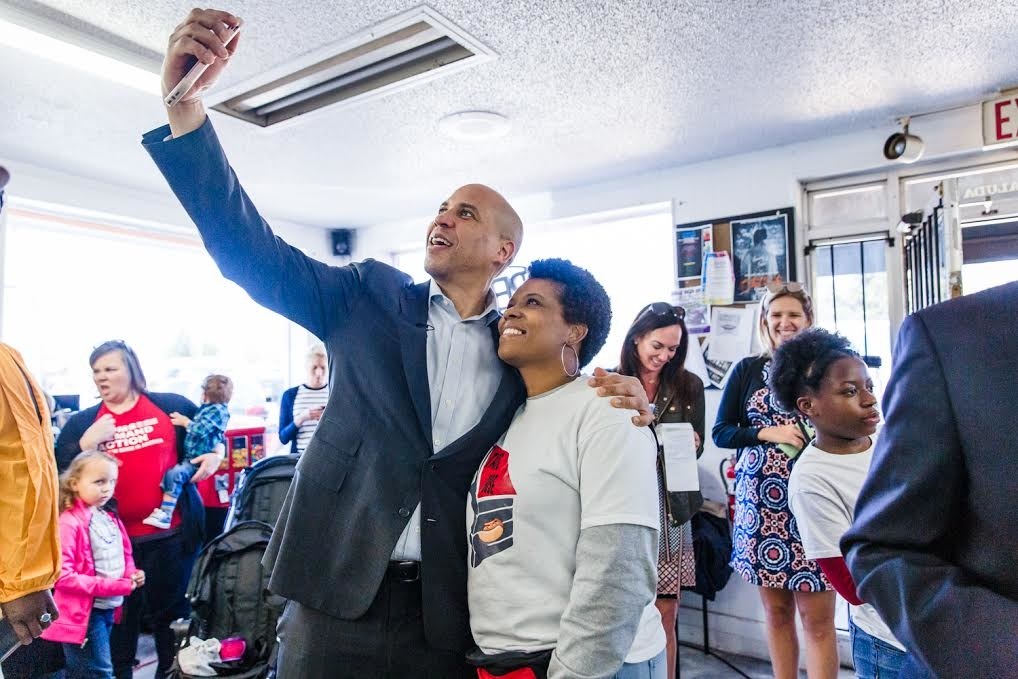The Women Changing Presidential Campaigns from the Inside

Julie McClain Downey, director of state communications for Senator Cory Booker’s presidential campaign, settled into the couch in her Washington, DC apartment last June—holding her newborn daughter with her left hand, and scrolling through TweetDeck with her right. Technically, she was still on the 12-week, gender-blind paid leave available to all of the campaign’s full-time staffers. But she wasn’t going to miss Booker’s first major televised debate of the election cycle, one that in other circumstances—when she wasn’t in the throes of diaper changes and feedings—she would have watched from campaign headquarters. And so with the baby swing pulled up next to the sofa, she and her husband (also a Booker campaign staffer, also on paid leave) sat in the glow of the TV, cozy in their sweats. “We were like, What is our life?,” says McClain Downey. “It’s so different now.”
It’s so different now could as easily describe the shifting demographics on presidential campaigns this election cycle, where for the first time in history, women dominate high-level positions. Almost a year after a record number of women won elected offices throughout the country (buoyed by female voters), there seems to be an understanding among presidential hopefuls that if you want to win, you better have women on your side—and on your staff. Of the 12 candidates who qualified for the October 15 debate, a third have female campaign managers; women hold more than half of senior leadership roles across the Democratic primary field; and multiple campaigns have teams that are at least 60 percent women.
“When I first started, I think I can remember three or four women who were leaders on campaigns,” says Beto O’Rourke’s campaign manager Jennifer O’Malley Dillon, who has worked on every presidential race for the last 20 years. “You knew who they were because there were so few of them.”
Almost eight years ago, when O’Malley Dillon was deputy campaign manager for President Barack Obama’s re-election bid, she approached older female colleagues about what it might be like to do this work with young children. “I was at that point like five years into my marriage, I was 35, contemplating kids, trying to decide, Can I do this campaign if I’m even thinking about kids? And I had women say to me, not in any other way than just to be supportive, ‘Absolutely no, you can’t do this with a kid,’…or ‘Sure, you can try that, but don’t tell anyone you might get pregnant.’” O’Malley Dillon went ahead with her plans to start a family anyway—soon learning she was pregnant with twins—but she was an outlier. “I really felt like I was a unicorn [working the 2012 race while pregnant],” she says. “People were looking at me like I was crazy.”
That’s hardly the case this election cycle, where multiple women are vying for the Democratic nomination and women have filled key campaign positions for more than a dozen candidates. Already, this increase in women’s representation behind the scenes has had an impact on campaign culture—and understandably so. It would be hypocritical for any candidate to talk about the need for better leave policies or equal pay on the debate stage, but not offer them to his or her staff. And so this has also pushed campaigns to become better workplaces. The difference from what O’Malley Dillon went through just seven years ago to what McClain Downey experienced this year is stark: McClain Downey not only interviewed for her position on Booker’s campaign while very visibly pregnant, she asked during the interview process what the paid leave policy would be before accepting the role.
Julie McClain Downey, back right, joined Senator Cory Booker’s presidential campaign while visibly pregnant.
Courtesy of Julie McClain Downey




